BREAST RECONSTRUCTION
– NEWPORT BEACH, CA –Being diagnosed with breast cancer is not only physically taxing, but also emotionally and mentally draining. Women diagnosed with breast cancer face a multitude of mental, emotional, and physical challenges. The disease starts with a tumor, which, if not removed early on, may spread to the lymph nodes and metastasize to other parts and organs of your body.
Before you know it, the cancer may progress so much that there is no other way to cure it but to have part or the entire breast removed. Add that with the emotional baggage of dealing with hair loss and skin changes, and you have a disease that challenges your emotional stability.

The potential of losing one or both your breasts can greatly affect the perception you hold of your body, self-image, and identity. It can even make you question yourself as a woman, affecting your self-esteem and sex drive.
Fortunately, you have the option of restoring the appearance of your missing breasts through breast reconstruction surgery.
Dr. Siamak Agha, one of SoCal’s top board-certified plastic surgeons, can help you renew your sense of femininity and beauty by recreating the size and shape of your natural breast.
Learn more about how breast reconstruction can help you restore your confidence after having your breasts removed by reading the rest of this article.
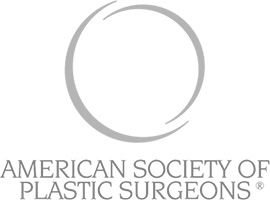
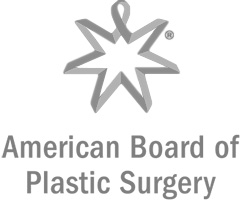
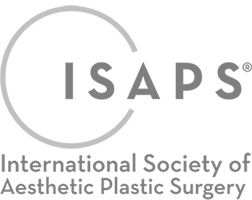
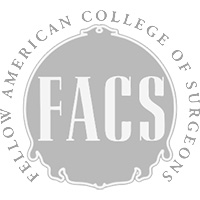

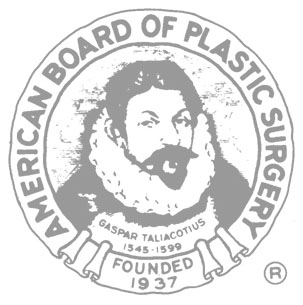
What is Breast Reconstruction?
Once you are diagnosed with breast cancer that doesn’t respond to non-invasive treatments, you have two surgical options to choose from.
The first one is a lumpectomy, which is the removal of the cancerous tumor. The second and more drastic one is a mastectomy, which is the removal of the entire breast.
In both cases, breast reconstruction surgery may be needed to rebuild the shape and look of the breast so that you can regain your initial physical appearance. The goal of the surgery is to create a reconstructed breast that resembles the other breast in shape and size.
If both breasts have undergone a mastectomy, then breast reconstruction can be used to create balance and stability for the patient.
But more than the physical appearance, breast reconstruction can help you recapture your self-esteem by having beautiful breasts again, thereby improving your quality of life.
With breast reconstruction, you can live your life without having a constant reminder of your mastectomy or lumpectomy. In turn, this can lead to a healthier lifestyle where you feel good about your appearance after combating breast cancer.

I had breast reconstruction after a mastectomy by a well-known surgeon who botched the surgery and left me disfigured. Dr. Agha not only repaired the damage, his reconstruction surgery corrected the problem completely.
Betsy S.
What are the Different Breast Reconstruction Techniques?
Thanks to the latest technological advancements, women now have several options when it comes to breast reconstruction techniques.
In general, you can choose between implant reconstruction and/or flap breast reconstruction.
Get more in-depth information about these methods as you read along.

How Does Dr. Agha Do Breast Reconstruction?
As previously mentioned, breast reconstruction often requires more than one procedure. You may choose to do the surgery at the same time as your mastectomy or wait until you have healed from it.
Here is a rundown of Dr. Agha’s approach in performing breast reconstruction.
Preparation
Dr. Agha will give you pre-surgery instructions to ensure your safety during surgery and recovery.
You will be asked to quit smoking at least three weeks before the surgery to avoid delays in healing time. You will also be advised to reduce alcohol consumption and completely stop drinking in the 24 hours prior to your breast reconstruction.
Avoid taking any aspirin for two weeks before your surgery as it may increase your chance of bleeding.
Learn more about the preparations you need to take for breast procedures here.
Anesthesia
A board-certified anesthesiologist will give you general anesthesia so that you will be unconscious and pain-free during surgery.
Breast Reconstruction Via Implants
If you’re opting for breast reconstruction using implants, you have the option to do immediate implant reconstruction or delayed breast reconstruction.
Immediate Implant Reconstruction
In this approach, your breast reconstruction is started at the same surgery as your mastectomy.
After your breast surgeon removes the breast tissues, the amount of remaining breast skin and tissue is assessed. If there is enough breast skin and tissue, then a final breast implant is placed under the remaining breast tissue or chest muscle to create a breast contour.
However, if the amount of remaining breast skin is not enough for a breast mound, then an empty tissue expander is placed under the breast tissue or the chest muscle. Saline solution is then injected into the tissue expander every 2-3 weeks for several months.
As the expander increases in volume and size, it stretches the breast tissue and skin, inducing growth of new breast skin. Once adequate breast skin is grown, the tissue expander is removed and the final breast implant is inserted.
With this method, you don’t have to endure even a day without breasts.
Delayed Breast Reconstruction
This method involves starting breast reconstruction later after the mastectomy is performed.
Similar to the immediate breast reconstruction, your breast surgery starts with the placement of a tissue expander under the breast tissue or chest muscle. As the tissue expander is inflated every 2-3 weeks, the breasts enlarge and form new breast skin.
Once the final desired volume is reached, the expander is taken out and the final implant is inserted.
With delayed breast reconstruction, you can first complete other cancer treatments, like chemotherapy and/or radiation therapy. It is also recommended for women with other health problems that need to be attended to first.
Flap Reconstruction
Flap reconstruction involves using tissue — such as skin, fat, and sometimes muscle — from another place on your body and forming it into the shape of a breast, then stitching it in place.
The actual procedure depends on the type of flap reconstruction being done. Dr. Agha typically performs the following.
TRAM Flap
Dr. Agha creates an incision along your bikini line. He then takes an oval section of skin, fat, blood vessels, and muscles from the lower half of your belly and moves the section up to your chest, forming it into a breast shape.
If you are getting a pedicle flap reconstruction, it means that the skin and muscle being used to create your new breast retains its natural blood supply.
To do this, one side of the abdominal muscle is folded upon itself and passed through a tunnel created under your skin that connects to your new breast. This is how the flap blood vessels remain intact and supply blood to your newly-created breast.
As for the free flap reconstruction, the abdominal muscle, with its overlying fat and skin, is completely detached from its original blood supply and moved to the chest area. These tissues include a preserved artery and vein, which are then reattached to the blood vessels in your chest area. Dr. Agha then attaches the flap to the surrounding tissues at the new breast site.
The pedicle TRAM takes about four hours, while the free TRAM may take six to eight hours to finish.
Latissimus Dorsi
Dr. Agha creates an incision on your back, near your shoulder blade. He then takes an oval section of skin, fat, blood vessels, and latissimus dorsi muscle and passes this flap through a tunnel into the new breast site. He sutures it while forming a breast shape.
The latissimus dorsi flap is often used with a breast implant, so Dr. Agha will also insert them either under your muscle or under your breast tissue.
The procedure usually lasts three to four hours.
SGAP Flap
For the SGAP flap, Dr. Agha creates an incision along the top of your buttocks and takes an oval section of skin, fat, and blood vessels from your upper buttocks. He then moves this section to your chest to form a breast shape.
No muscles are moved in the SGAP flap. For the blood supply, the SGAP flap is completely detached from the donor site, making it a free flap. Dr. Agha matches the tiny blood vessels in the tissues of your new breasts with your chest blood vessels, reattaching them under a microscope.
With the SGAP flap, you can have two breasts reconstructed, which makes it the method of choice for bilateral flap reconstruction.
However, the whole procedure can last from 9-12 hours. It is also possible to do the breasts separately, which means there will be two different operations spaced a few months apart.
Nipple and Areola Reconstruction
As the final stage of breast reconstruction, nipple and areola replacement is actually an optional procedure. It is recommended for women who prefer the look of a complete breast.
Dr. Agha determines the type of nipple and areola reconstruction by considering the tissue quality of the newly-reconstructed breast. He also takes into account whether or not the reconstruction will be done with a surrounding graft.
The two most common techniques used for nipple and areola reconstruction are flaps and grafts.
Graft nipple reconstruction commonly uses slices of skin taken from the labia or the areola of the other breast, if it’s still intact. These skin layers are detached from the surrounding blood supply, so they have to rely on a new blood supply source in the area to which they are relocated.
Another method is flap reconstruction, which involves using skin or subcutaneous fat from the site surrounding the area of the new nipple and sewing it together to create the new nipple. Unlike grafts, flaps consist of tissues that have their blood supply still connected to the original source.
Among all flap reconstruction techniques, Dr. Agha commonly uses the C-V flap technique. It consists of two outer V-shaped flaps and a central C-shaped flap, hence its name.
The diameter of the C-shaped flap determines the diameter of the new nipple, while the width of the V-shaped flaps dictates the nipple projection.
The base of the C-shaped flap remains attached to the original blood supply. The V-shaped flaps are taken from the subcutaneous tissue and wrapped around and securely sutured to the central C-shaped flap.
Post-Surgery
Your affected areas will be closed with sutures and bandaged. You might also have drains in your breast area to remove any excess fluid that might have accumulated.
How Do You Recover from Breast Reconstruction?
Please read the general information on recovery after breast surgery.
Since breast reconstruction surgery is an ongoing process that’s completed in several stages, you should be prepared to deal with several months of discomfort.
Typically, breast reconstruction needs at least six weeks of recovery. Flap reconstruction may take a longer healing time than implant reconstruction because healing must take place in two areas of the body.
You might need to stay in the hospital for two to five days after your breast reconstruction. You will experience bruising, swelling, soreness, and numbness or loss of sensation at your surgical site for at least two weeks post-op. It may even take up to eight weeks for bruising and swelling to subside. Dr. Agha will prescribe you pain medications to manage discomfort.
What Results Can You Expect from Breast Reconstruction?
Regardless of the surgical technique used, you can expect the following results from your breast reconstruction.
- Balanced or symmetrical breast appearance
- Improved body contour
- Better mental and emotional state
- Higher self-esteem
- Improved quality of life
What are the Potential Risks and Complications?
Though breast implants are considered safe, they do have their fair share of risks.
Some complications that can develop include leaking, ruptured implants, capsular contracture, and shifting of position. Plus, implants do not last forever, so they may need to be replaced over time.
Breast Reconstruction FAQs
Get Your Breast Reconstruction Done in Newport Beach, Orange County
Getting breast reconstruction surgery is not a one-time deal. It is a long and winding process that can take a toll on your physical, mental, and emotional health, but rest assured that we will hold your hand every step of the way here in The Aesthetic Centers.
Dr. Agha’s board certification and more than a decade of experience in cosmetic and reconstructive plastic surgery ensure that you can achieve your desired results as much as possible. He also makes sure that your breast reconstruction is handled with utmost safety and compassion, from consultation to post-op care.
